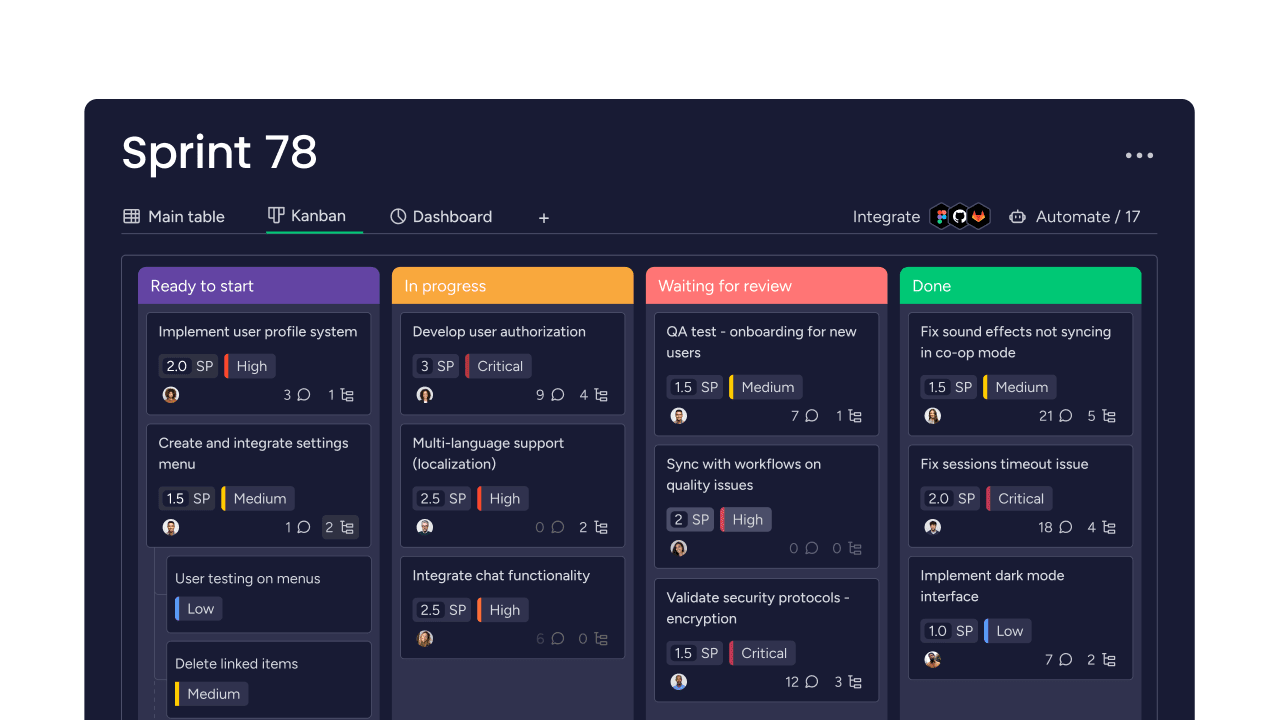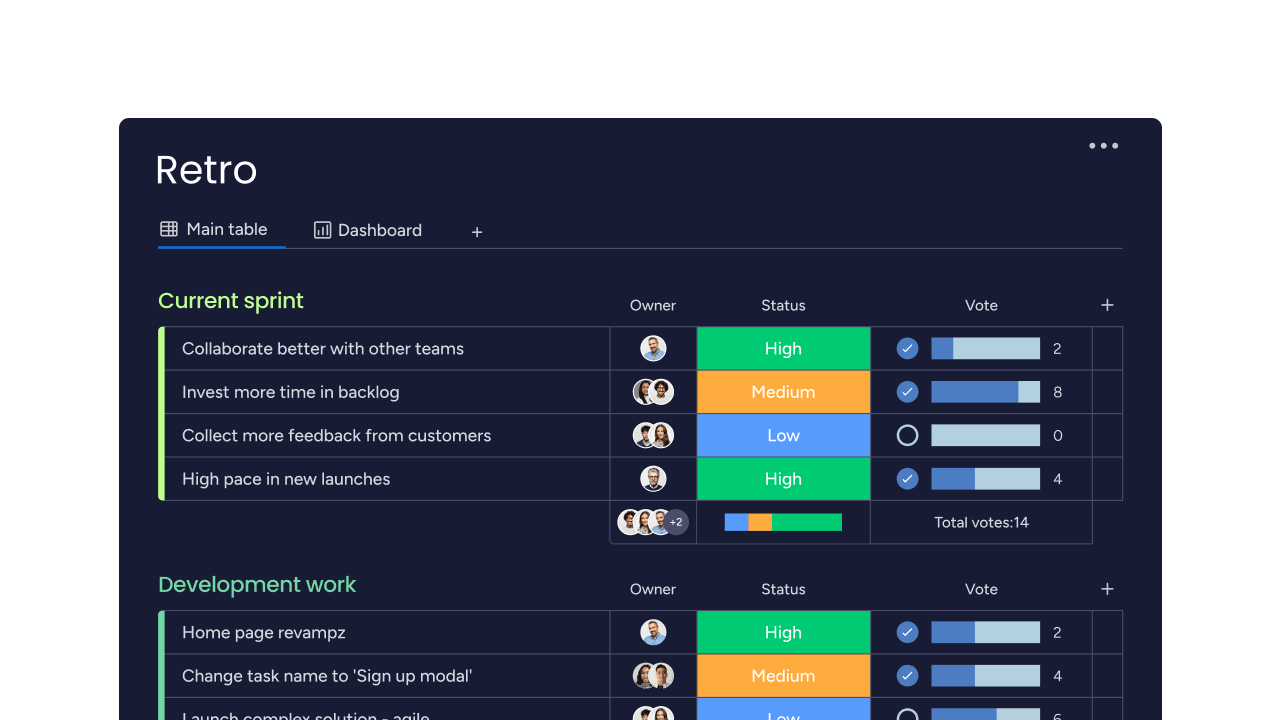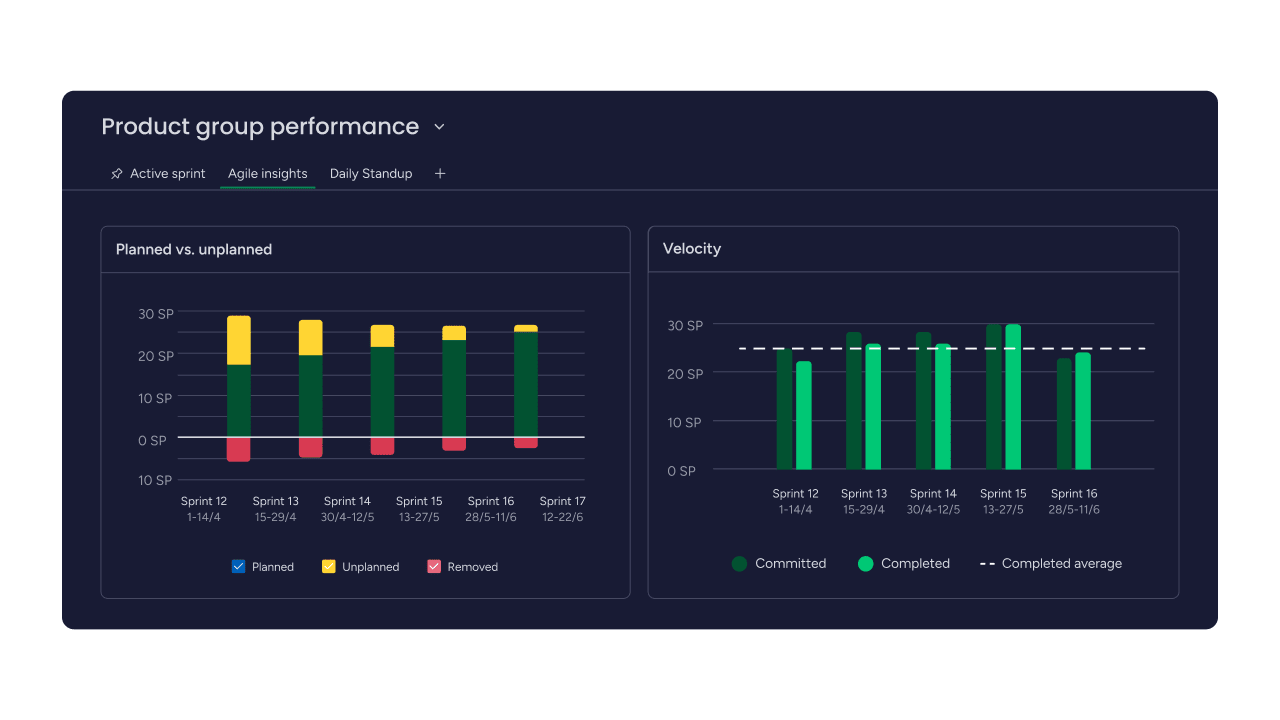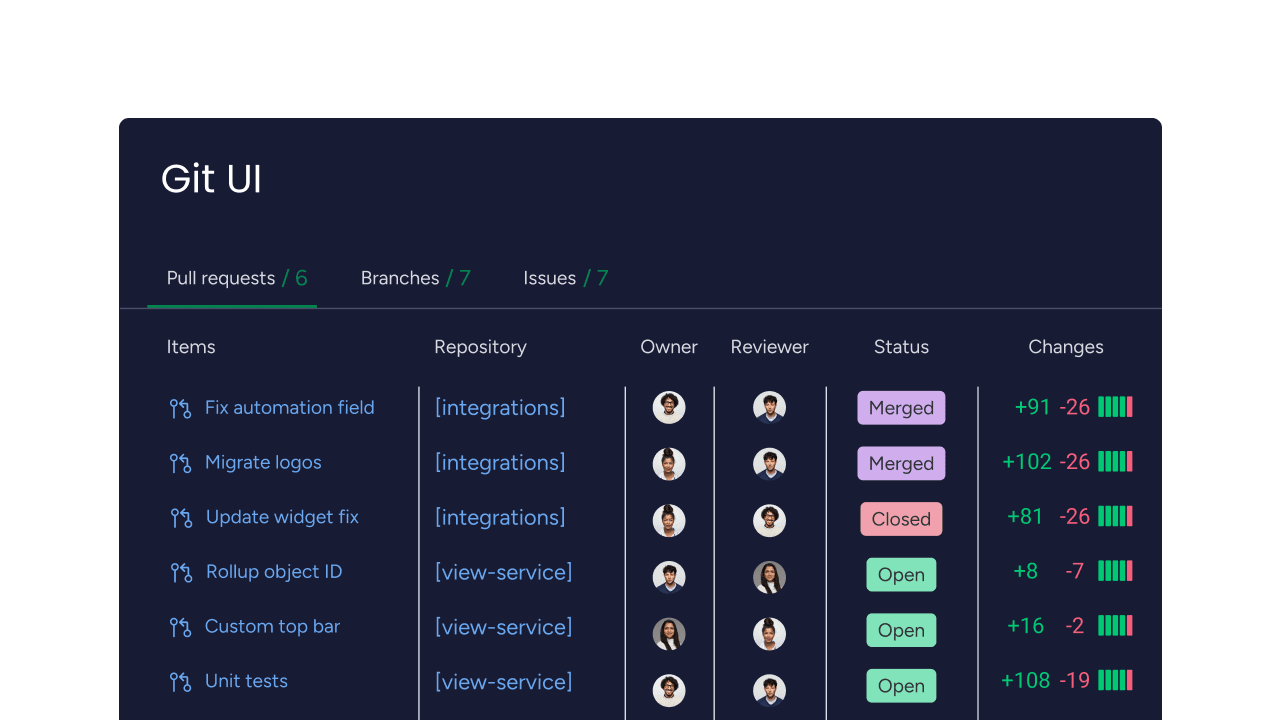Adopting Scrum ceremonies alone is insufficient to make a development team faster or more aligned. When supported by a strong cultural foundation, sprints evolve into a series of connected goals, and retrospectives become productive problem-solving sessions. The true engine behind high-performing Agile teams is not the framework itself, but the principles they live by every day.
The five Scrum values — commitment, courage, focus, openness, and respect — provide this essential foundation. They guide how teams collaborate, make decisions, and hold themselves accountable to shared objectives. This article breaks down each value with practical examples, showing you how to build them into your team’s daily habits.
When teams truly live these values, they build the trust and transparency needed to ship products faster and with more confidence. This guide provides a clear roadmap for implementing these principles, from running workshops to designing retrospectives. Readers will learn how to create an environment where values are not just posters on a wall, but the fundamental way of working, supported by flexible processes and clear visibility for everyone.
Key takeaways
- The five foundational values: the five Scrum values form the essential cultural foundation for high-performing teams, enabling faster delivery and alignment on shared goals.
- Implement through practice: to make values stick, implementation must start with structured tools like focused workshops and retrospective check-ins that help the team define what each value looks like in daily, observable behavior.
- Values strengthen the pillars: the values directly reinforce Scrum’s three pillars of transparency, inspection, and adaptation, turning mere processes (ceremonies) into meaningful team behaviors that drive results.
- Flexible tools amplify values: transparent dashboards and flexible workflows, such as those provided by modern solutions like monday dev, amplify the values by enabling team ownership and maintaining necessary visibility across all stakeholders without micromanagement.
- Psychological safety is key: building psychological safety first is paramount, as it creates environments where teams feel confident and safe enough to exhibit courage, speak up about issues, and tackle difficult challenges openly.
What are the 5 Scrum values?
The five Scrum values are commitment, courage, focus, openness, and respect. These principles guide how teams work together and make decisions in the Scrum framework. They shape every interaction, from daily standups to sprint retrospectives.
- Commitment: this means dedicating yourself to shared team goals and actively supporting one another, rather than merely promising to complete individual tasks. When the Scrum team commits to a Scrum sprint goal, everyone works together, offering help to teammates to overcome obstacles instead of working in isolation.
- Courage: courage is the willingness to speak up about problems and tackle difficult challenges. This includes questioning unrealistic requirements or deadlines, raising concerns early about risks, and ensuring that Product Owners prioritize work based on genuine value over internal politics.
- Focus: this requires concentrating entirely on the current Sprint Goal without distraction. All work is aligned with current objectives, and interruptions are managed through proper channels. Using transparent planning tools, like dedicated sprint boards, helps keep the entire team oriented toward shared, prioritized goals.
- Openness: this value fosters transparency about all progress, challenges, and feedback. Teams share honest updates during all Scrum meetings, discussing problems openly before they escalate. Open teams welcome feedback as opportunities for improvement, extending this transparency to stakeholders.
- Respect: respect involves valuing each person’s skills and perspective, treating teammates as capable professionals. Disagreements must be focused constructively on ideas, not personalities. Respectful teams value diverse viewpoints because different perspectives strengthen overall decisions.
How do Scrum values transform team performance?
Living these values leads to faster delivery, fewer risks, and happier stakeholders. Teams that embrace values create the foundation for transparency, inspection, and adaptation. According to McKinsey’s 2024 workforce resilience study, employees with high psychological safety demonstrated 3.9x more innovative behavior.
Values-driven teams also keep their best people longer. Stanford’s 2024 hybrid work experiment found teams with strong collaboration practices reduced resignations by 33%. When you feel safe to speak up and contribute your best thinking, you become more engaged and productive.

Understanding each Scrum value in practice
Scrum values can sound abstract until you see how they shape daily teamwork. Understanding what they look like in real situations helps teams move from theory to habits that actually improve delivery.
How commitment creates accountability?
Commitment shifts your focus from individual tasks to team goals. This creates shared ownership where everyone supports each other’s success.
You see commitment during sprint planning when teams consider what they can realistically achieve. It appears in standups when you offer help to struggling teammates.
Why courage sparks innovation?
Courage enables experimentation and risk-taking. Teams with psychological safety try new approaches and learn quickly from failures.
Courageous teams challenge broken processes. They suggest new technologies even when change is hard.
Using focus to accelerate delivery
Focus reduces context switching and speeds up delivery. UC Berkeley’s 2025 Psychological Review study found that switching between goals impaired performance, with shorter switching intervals worsening outcomes. When you limit work in progress, you complete tasks faster with higher quality.
Focused teams use sprint boards to visualize commitments. They review priorities regularly and consciously decide what to defer.
Building trust through openness
Openness makes problems solvable before they escalate. When you share information freely, you build confidence in handling challenges.
Open teams show real progress in reviews, not polished presentations. They use retrospectives to honestly assess what needs improvement.
Fostering respect across all roles
Respect enables collaboration between developers, product owners, and stakeholders. It helps you navigate disagreements and find optimal solutions.
Advanced solutions like monday dev support this collaboration with Scrum boards and customizable views. Different roles can contribute effectively while respecting each other’s expertise.
Scrum values vs Scrum principles
This table below outlines the difference between both. Keep in mind that values shape culture while principles guide practices. Both are essential, but they work at different levels, much like Agile principles in broader frameworks.
| Aspect | Scrum values | Scrum principles |
|---|---|---|
| Purpose | Guide team behavior | Guide framework implementation |
| Focus | How teams interact | How work gets done |
| Examples | Commitment, courage, focus | Empiricism, self-organization |
| Application | Daily interactions | Process design |
Scrum values and the 3 pillars of Scrum
The five Scrum values are not just cultural ideals; they are the essential support system that makes Scrum’s three fundamental principles, known as the three pillars, effective in driving continuous improvement.
Understanding the pillars of Scrum
The Scrum framework relies entirely on empiricism, which means making decisions based on observation and experimentation. The three pillars are the foundation of this empirical process:
- Transparency: making work visible to everyone.
- Inspection: reviewing progress regularly.
- Adaptation: adjusting based on what you learn.
These pillars work together to drive continuous improvement.
How values strengthen the pillars?
Each value reinforces specific pillars. Openness enables transparency through honest communication. Focus supports inspection by keeping attention on relevant work.
Courage empowers adaptation by giving teams confidence to change. Commitment ensures you follow through when change gets difficult.

5 ways to implement Scrum values successfully
Implementing Scrum values successfully requires a structured, intentional effort. To align with Agile best practices, here is a roadmap for embedding these values into your team’s routine.
Step 1: start with value-focused workshops
Run interactive workshops to explore what values mean for your team. Use real scenarios from your work to make concepts concrete.
Teams should leave with clear agreements about demonstrating each value. This shared understanding becomes your foundation.
Step 2: design values into your retrospectives
Add value assessments to every retrospective. Ask specific questions about how you demonstrated each value during the sprint.
Questions that drive reflection include:
- “Where did we show courage?”: identifies brave decisions and missed opportunities.
- “How could we be more open?”: reveals communication gaps to address.
- “When did focus slip?”: highlights distractions to manage the next sprint.
Step 3: build psychological safety first
Create environments where people feel safe making mistakes and challenging ideas. Without safety, other values can’t flourish.
Leaders build safety by admitting their own mistakes. They respond positively when team members raise concerns.
Step 4: model values through leadership
Scrum masters and product owners must demonstrate values daily. Your actions set the tone for team culture.
When leaders consistently model values, team members follow. This creates positive cycles where values become normal behavior.
Step 5: measure and celebrate progress
Finally, track values adoption through team health checks and daily observations. Look for increased participation and constructive conflict handling.
Celebrate values-driven actions in team meetings. Recognition reinforces that values matter to your success.
How to navigate common Scrum values challenges
Even committed teams face predictable challenges when trying to embody the Scrum values consistently. Organizations can address these issues using a proactive, Agile transformation approach:
Challenge 1: breaking through resistance to change
Teams resist values when past openness was punished or courage discouraged. Fear of vulnerability blocks progress.
Overcome resistance by introducing values gradually. Share success stories and involve teams in defining how values apply.
Challenge 2: balancing values with delivery pressure
Organizations worry that values slow delivery. This misunderstands how values support sustainable performance.
Show how values prevent rework and reduce dysfunction. Share examples of values-driven teams achieving consistent delivery.
Challenge 3: maintaining values in distributed teams
Remote teams struggle to build trust and share information openly. Physical separation creates unique challenges.
Address this through virtual coffee chats and structured check-ins. Use platforms like monday dev to maintain transparency across locations.
Real examples of Scrum values driving success
Values create tangible outcomes when teams face real challenges. Here are three situations where values made the difference.
- Handling changing requirements: a team faced major requirement changes mid-sprint. They used openness to discuss impacts transparently and courage to explain trade-offs. Through commitment to shared goals, they found solutions that addressed critical needs without burning out.
- Resolving team conflicts: two developers disagreed on technical approach. The team created space for both perspectives using respect and openness. Their courage to address conflict directly led to a hybrid solution stronger than either original idea.
- Delivering under pressure: facing a critical deadline, a team felt pressure to cut corners. They showed commitment to quality standards and courage to negotiate realistic scope. Their openness preserved customer relationships while avoiding technical debt.

How does monday dev amplify your Scrum values?
Empowering teams to truly live their values, monday dev offers flexible, transparent features. The platform supports values-driven behavior across the team while delivering essential practical capabilities.
Enable team ownership with flexible workflows
The platform’s customizable workflows, provided by monday dev, let teams design processes that precisely match their context. Teams can adapt boards and automation to support their unique values and working style.
This flexibility means committing to desired outcomes, not rigid processes, allowing teams to maintain ownership while staying aligned with shared goals.
Create transparency without micromanagement
Real-time dashboards provide visibility without interrupting team flow. Managers see progress and challenges while respecting professional autonomy.
This transparency enables inspection and adaptation. Teams share information openly knowing it supports their success.
Foster collaboration across every sprint
Seamless integration is achieved as monday dev bridges development teams and stakeholders through shared boards and integrated communication. Different roles contribute effectively while maintaining respect for diverse expertise.
The platform connects technical work directly with business processes, which ensures respectful and efficient collaboration across all expertise areas.

Start living Scrum values today
Ready to transform how your team works? Start with a workshop to define what values mean for you, and consult the Scrum guide for standard roles and events. Add value check-ins to retrospectives and celebrate values-driven behaviors.
Most importantly, use platforms that support your values journey. Try monday dev to build transparent, collaborative workflows that make values real in daily work and consider aligning them with your Agile development process for consistent improvements.
Frequently asked questions
How do you measure if a team is living the Scrum values?
You measure if a team is living Scrum values by tracking Scrum metrics and observing specific behaviors like open communication during meetings, shared problem ownership, and constructive feedback in retrospectives. Look for increased participation, willingness to help teammates, and honest progress reporting.
Can Scrum values work without the full Scrum framework?
Yes, Scrum values benefit any collaborative team even without the complete framework. Commitment, courage, focus, openness, and respect improve team dynamics regardless of your specific methodology.
How long does it take to embed Scrum values in team culture?
Embedding Scrum values typically takes several months of consistent practice. The timeline depends on team size, existing culture, leadership support, and how intentionally you develop values through workshops and daily interactions.
What happens when Scrum values conflict with company policies?
When Scrum values conflict with policies, teams should discuss concerns openly with leadership to find alignment. Most conflicts resolve through dialogue that helps both sides understand goals and find creative solutions within constraints.
How do Scrum values apply to scaled Agile environments?
Scrum values guide interactions across multiple teams in scaled environments, including Scrum of Scrums. Values become more important at scale because they provide consistent principles for collaboration and conflict resolution across diverse groups.
Do Scrum values work for non-software development teams?
Yes, Scrum values work for marketing, operations, HR, and other teams using collaborative approaches. Commitment, courage, focus, openness, and respect support effective teamwork regardless of the specific work performed.
 Get started
Get started 

